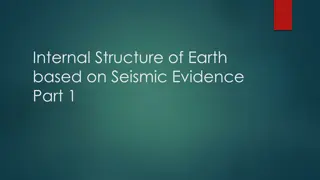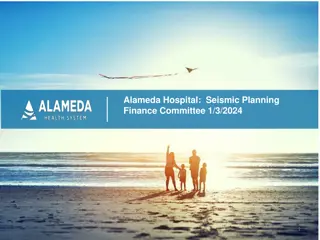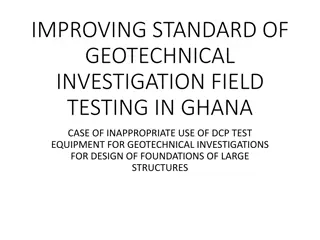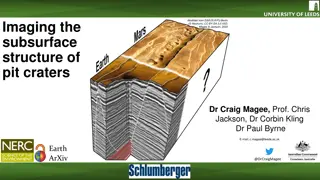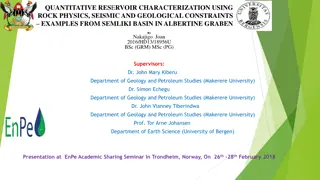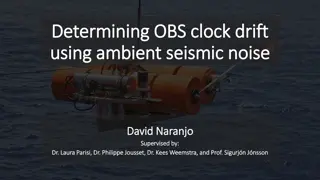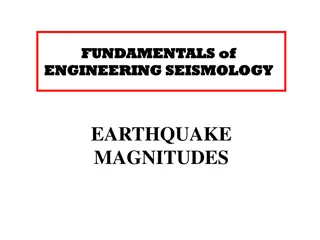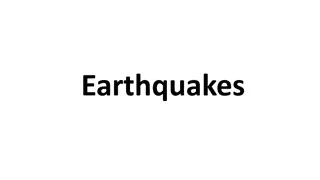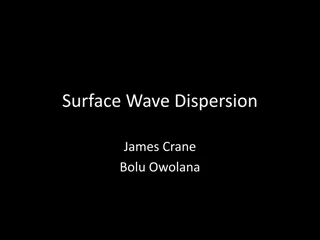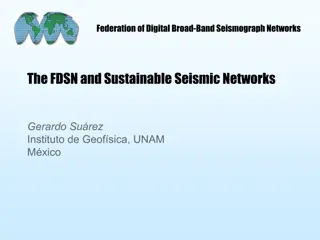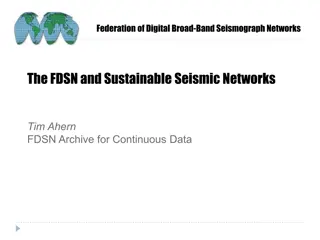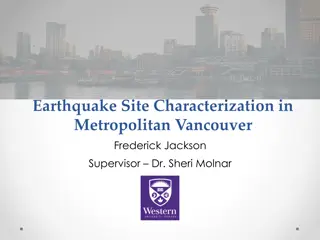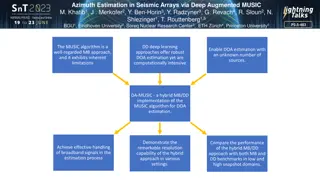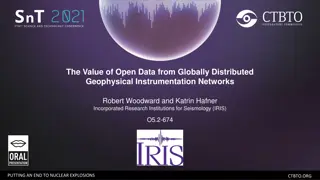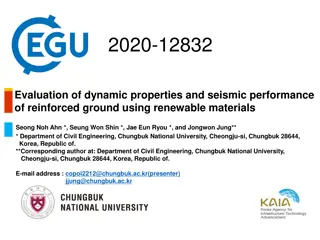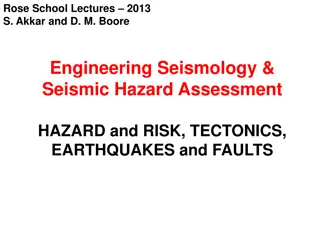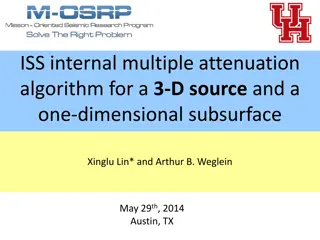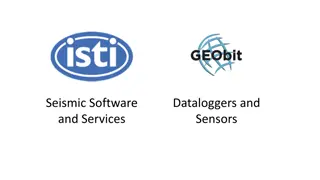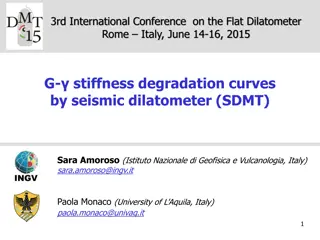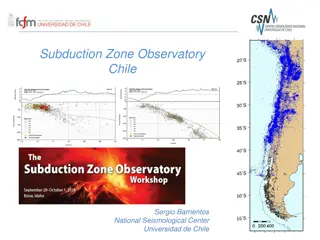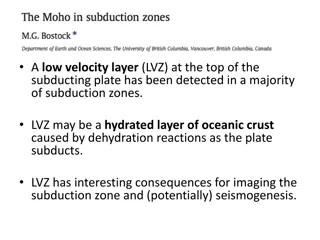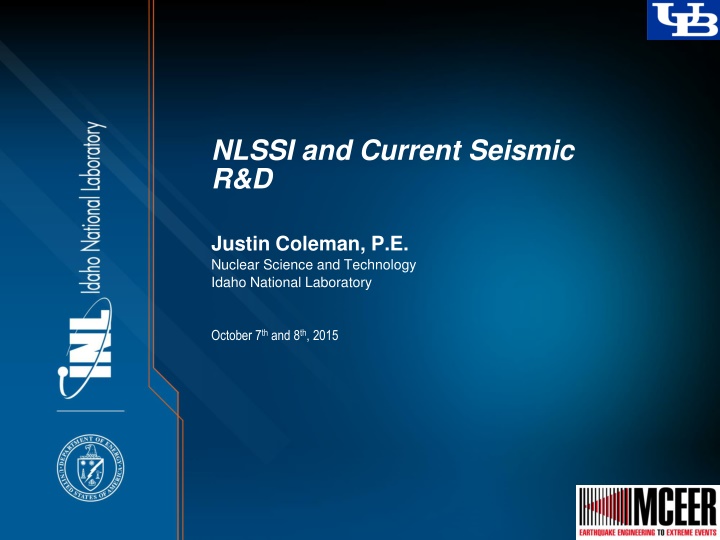
NLSSI and Current Seismic R&D Meeting Objectives
The NLSSI and Current Seismic R&D meeting aimed to bring together leaders in site response and SSI analysis to guide ongoing research, encourage code development, discuss updating standards, and explore collaboration opportunities. The objectives included presenting ongoing research, receiving input on methodology development, conducting experimental testing for validation, and discussing the path forward for advanced numerical tools. Steering and advisory committees focused on reviewing methodology, implementation, and action items from previous meetings, while team collaborators aimed to foster collaboration. The mission and vision of INL's Seismic R&D program were to manage seismic risk at nuclear facilities through cost-effective analytical approaches, reduce uncertainty, and quantify safety margins.
Download Presentation

Please find below an Image/Link to download the presentation.
The content on the website is provided AS IS for your information and personal use only. It may not be sold, licensed, or shared on other websites without obtaining consent from the author. If you encounter any issues during the download, it is possible that the publisher has removed the file from their server.
You are allowed to download the files provided on this website for personal or commercial use, subject to the condition that they are used lawfully. All files are the property of their respective owners.
The content on the website is provided AS IS for your information and personal use only. It may not be sold, licensed, or shared on other websites without obtaining consent from the author.
E N D
Presentation Transcript
NLSSI and Current Seismic R&D Justin Coleman, P.E. Nuclear Science and Technology Idaho National Laboratory October 7thand 8th, 2015
Objectives of Meeting Bring together group of leaders in site response and SSI analysis to: Guide ongoing research and development activities Encourage numerical commercial code development Discuss requirements for updating codes and standards. Discuss opportunities for collaboration Organize a diverse skill set of team members 2
Objectives of October 7th Present ongoing research and development in: NLSSI Methodology development NLSSI application in SPRA s Experimental testing for validation Demonstrate UB structural dynamic capabilities for large scale validation tests in NQA-1 certified lab Receive input from attendee s, steering and advisory panel members on: Are we heading down the right path? What experimental tests are needed to get advanced numerical tools and methods in codes and standards? 3
Steering and Advisory Committees Meeting Objectives for morning session on NLSSI R&D Steering committee review NLSSI methodology development Committee members Bob Kennedy Farhang Ostadan Greg Mertz Mike Salmon Andrew Whittaker Advisory panel review of NLSSI implementation in SPRA s Advisory panel members Bob Kennedy Nilesh Chokshi Bob Budnitz Action items from previous meetings High frequency numerical noise Investigate coefficient of restitution Need experimental soil testing Need a study to identify if hazard curve slope is too steep in advanced SPRA study 4
INL Seismic R&D Mission and Vision VISION Manage seismic risk at nuclear facilities through cost effective analytical approaches and technologies Reduce uncertainty and quantify the safety margins at existing and new nuclear facilities. Verified and Validated advanced external hazard analysis tools and methods implemented in a comprehensive, risk-informed framework that provides best estimate nuclear facility response and economically ensures plant safety during and after beyond design basis events. Short Term Goal Integrate RD&D efforts and expertise to leverage current resources and ongoing R&D to create a unified methodology deployable in codes and standards Manage seismic risk at nuclear facilities through cost-effective, verified and validated analytical methods and tools Develop and deploy seismic risk management technologies, such as seismic isolation (SI) Medium - Long Term Goal Evaluate the performance of virtual nuclear power plants and nuclear facilities to a wide range of external hazards including multiple event scenarios. Allows nuclear facility owners to virtually test external hazards before the actual facilities are tested with actual hazards. Owners can then anticipate potential issues and resolve them 6
Seismic R&D Activities DATA (Data will be gathered and experimental tests run to validate the methods and tools. Data will be gathered from existing seismic and external hazard events at nuclear power plants. Experimental tests will be performed to provide validation data.) TOOLS (Tools development includes using and integrating existing numerical software and developing new software when necessary to support the methods.)(Numerical Software) METHODS (Methods include acceptable numerical approaches and risk-informed evaluation approaches.) Applications (Real world Nuclear Facilities and Power Plants used to test verified and validated methods and tools) Methods and tools under development will be verified and validated using existing data and using the Experimental Research Group External Hazards (ERG-EH) Nonlinear Soil Structure Interaction (NLSSI) Methodology Development (DOE NNSA and TerraPower) Seismic and Flooding Multievent scenario at NPP with industry partners (DOE- NE, LWRS) Time integration calculation for solving structural dynamic problems (DOE-NE, LWRS) Large scale testing used to validate numerical models used in Seismic Isolation of large scale reactor systems (DOE NNSA and TerraPower) Method for Seismic Isolation of suspended components (DOE NNSA and TerraPower) Economics Study of seismic isolation of generic Nuclear Facility (DOE-AU) Tools for solving NLSSI problems (DOE-NE, LWRS) Validation of seismic wave propagation in soils. 1D Geotechnical laminar box testing at University at Buffalo (DOE-NNSA) Application of NLSSI into Seismic PRA s (DOE-NE, LWRS) Tools for linking NLSSI with other external hazards (DOE- NE, LWRS) Identifying regulatory gaps associated with implementation of seismic isolation for advanced reactors (DOE-NE, Advanced Reactors) Stochastic 3D dynamic soil response during earthquake ground motions (LDRD) Flooding tests (Oregon State University) 8

